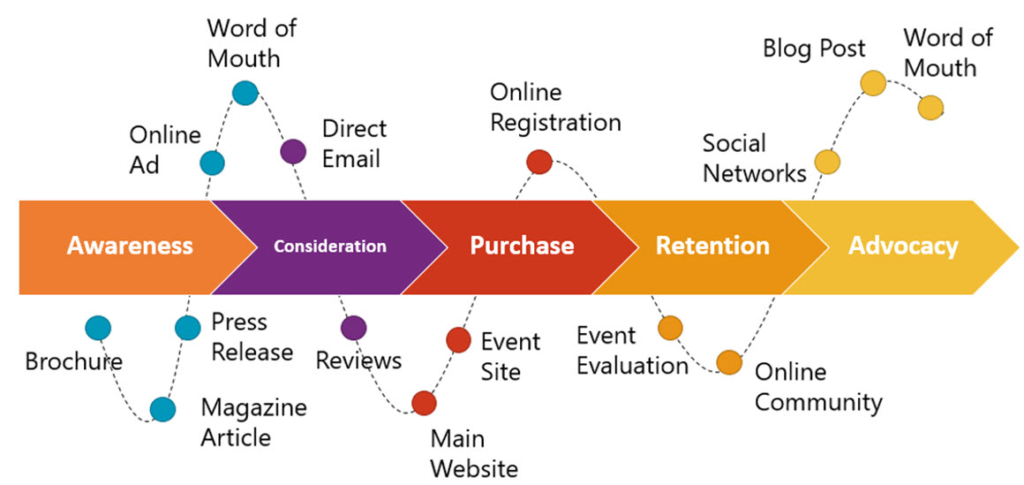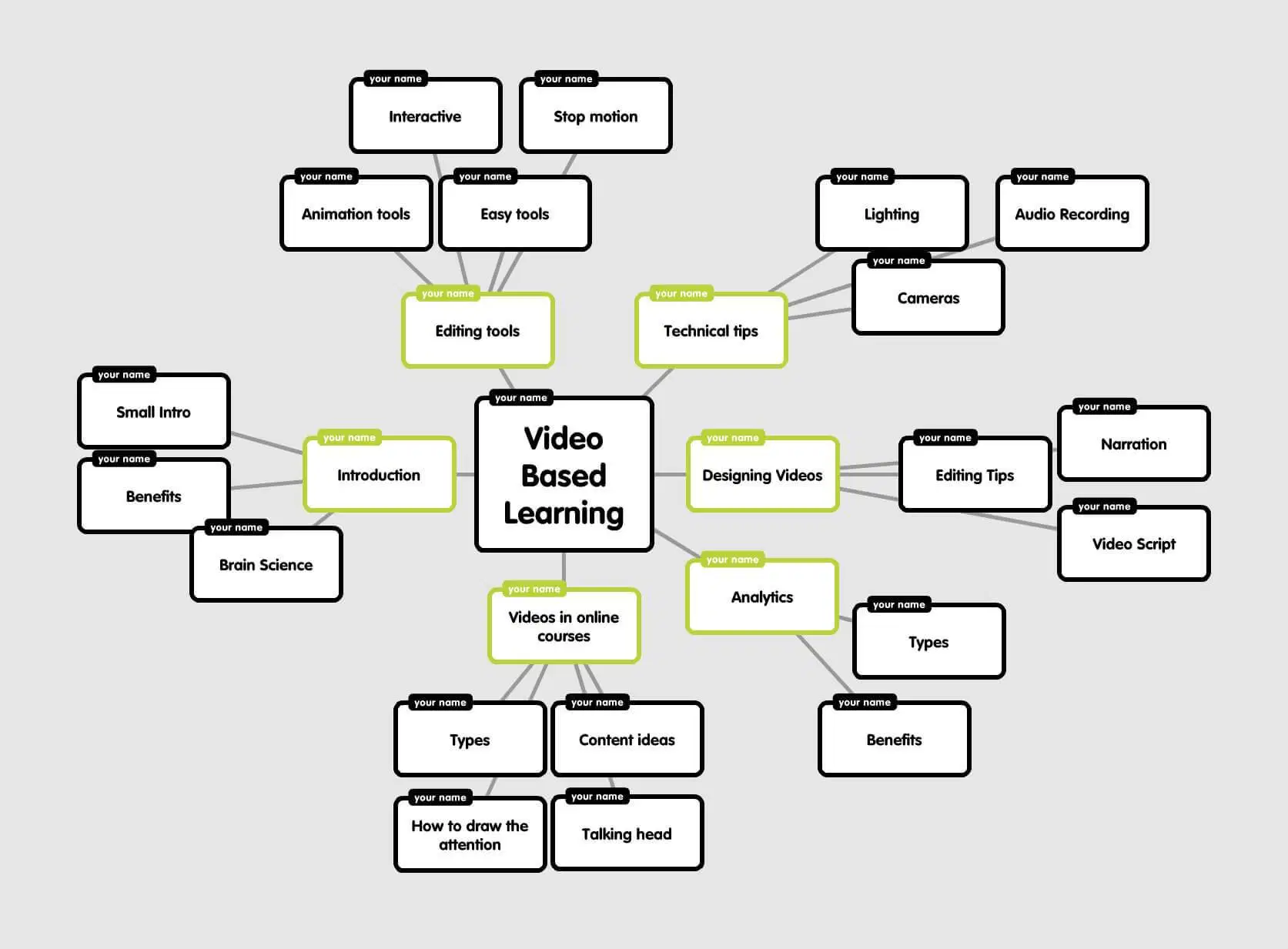By using the principles of CX, you can greatly enhance your student’s experience and leave them raving about your course.
In an online learning course, your students are your customers. They pay you either in time or money. They expect to get what they pay for.
Whether you’re creating an online academy for your customers or building a course to sell, there are three main objectives that you need to accomplish:
- Learners need to complete the course
- Learners need to learn the main objectives you have defined
- Learners need to find value in the time they spent
If learners are engaged and accomplish these three goals, they are more likely to come back for your next course, and they are more likely to recommend you to their friends.
Using the principles of customer experience (CX) can make your learner’s journey more successful. Customer experience is the overall perception that customers have of their journey with a company from start to finish. It includes everything from viewing ads on a subway platform, to speaking to the sales team, signing up for a free-trial and talking to the customer service team.
If you’re creating an online course, instead of guiding customers through a purchase, you’re guiding learners to education. The business world has dedicated time and research to improving CX for many years. While we’re far from perfecting this science, many techniques that work for CX are also relevant to online educational content. As more and more courses move online, it’s even more important than we apply CX principles to improving online learning.
Let’s look at four ways CX can help improve your online course.
 Understand the journey
Understand the journey
A customer’s experience is the sum of all the interactions they have with your brand. While each touchpoint can be positive or negative, that one moment can’t define the entire relationship. For example, if a customer was able to find what they were looking for, that’s a positive touchpoint. But if they had to wait in line to checkout, that’s a negative. Overall, the customer might still think their experience was positive. In order to improve the entire customer journey, we need to look at the big picture.
In CX teams, we draw a customer journey map which includes all the touchpoints between customer and company. Each touchpoint includes the goal of the customer, any emotions they may be feeling and any other important details of the interaction. A customer journey map might look something like this:

In online courses, we use storyboards: detailed maps that represent course content and give an overview of the “story” the course is telling. Just like in the customer experience, each touchpoint cannot stand on its own. Every piece of the course needs to contribute and flow naturally from the previous course content. By storyboarding, you can understand what your students already know, what they need to know next and what you can do to improve their learning journey.
“The goal of the customer journey map is really to get a holistic view of what the customer is going through from their point of view and really what it’s like for them on a personal level, that human level.” Kerry Bodine, a customer experience consultant, Moz Whiteboard Friday
 Multiple channels
Multiple channels
The customer experience doesn’t just happen over one communication channel. We aren’t only talking to customers over email, or just over the phone, or only on social media. The ideal customer experience happens seamlessly over a variety of channels – ideally the channels that the customer prefers.
The same is true for online learning. No one likes reading pages and pages of a dry textbook – it’s not engaging. Instead, courses should employ a variety of teaching styles including text, video, audio, multimedia, engaging graphics, or screencasts. If you can inject a little humor or interesting stories into your course, do that too! Using the right learning management system can make this easier for you by supporting different learning formats like video and quizzes.
 Make it effortless
Make it effortless
Reducing the effort customers need to exert to be successful is critical to a great customer experience. Customers want to do business with companies that make it easy for them. If your customers struggle to understand how to use your product, or how to get help, you’re likely to lose a few of them. In fact, 96% of customers who have had a high effort experience report being disloyal in the future.
While completing an online course obviously takes work, you don’t want your learners to need to work hard to understand you. Here are a few things you can do to make sure your learner’s journey is effortless:
- Signpost your course with a detailed syllabus and clear introductions to each module. The content of each course shouldn’t be a surprise to the learner.
- Use an LMS that is easy for learners to navigate. Walk through the course yourself to ensure there is no confusion.
- Keep up to date with answering questions from learners. If they are having trouble accessing or understanding certain content, they shouldn’t have to run a mile to get help.
 Listen to feedback
Listen to feedback
Learners, just like customers, will tell you exactly what they need to succeed. Collecting, listening and acting on feedback can take your CX (or your online course) from okay… to great!
Ask for feedback during the course. Questions like “Did you understand everything in this section?” or “Did you learn what you expected to from this module?” are quick to answer and can help course creators identify where their content may have missed the mark.
Ask for feedback at the end of the course. Evaluation surveys can be a longer questionnaire emailed after the student has completed the course. Reading and taking action on student comments can make sure your course meets the expectations of future students.
Finally, look at what learners are telling you even when you aren’t asking for feedback. Whether it’s in your online reviews, a side-note in an email, or every learner stopping the course at exactly the same place – there is a wealth of knowledge about what your customers are really looking for.
 Improve the student experience with CX
Improve the student experience with CX
Your students are exchanging their time and money for your knowledge. That makes them your customers. As such, they are fully deserving of a great experience. When they get one, they are sure to come back for your next course and recommend your course to their friends and family.
By using the principles of CX, you can greatly enhance your student’s experience and leave them raving about your course.







